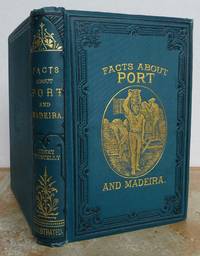
U.S. Destroyers; An Illustrated Design History
by Friedman, Norman
- Used
- very good
- Hardcover
- first
- Condition
- Very good/Good
- ISBN 10
- 087021733X
- ISBN 13
- 9780870217333
- Seller
-
Silver Spring, Maryland, United States
Item Price
$125.00$93.75
Payment Methods Accepted
About This Item
Annapolis: Naval Institute Press, 1982. Presumed First U. S. Edition, First printing. Hardcover. Very good/Good. A. D. Baker III (Profile Drawings). x, [2], 489, [3] pages. Illustrations. Key to Line Drawings. Notes to Tables. Notes on Sources. Index. This fully illustrated series offers detailed descriptions of the evolution of all classes of the principle U.S. combatant types, as well as plans, profiles, and numerous detailed photographs. Norman Friedman, Ph.D., is an American author and naval analyst. He has written over 30 books on naval matters, and appeared on television programs on PBS and the Discovery Networks. Friedman holds a doctorate in theoretical physics, completing his dissertation "Additional Scattering of Bloch Electrons by Simultaneous Imputity and Lattice Interaction" in 1974 Columbia University. From 1973 to 1984, he was at the Hudson Institute, becoming Deputy Director for National Security Affairs. He worked for the United States Navy as in-house consultant. From 2002 to 2004, he served as a futurologist for the United States Marine Corps. A.D. Baker III is a highly regarded naval authority known for his work as an illustrator and writer. His line drawings appear in several books. He is the editor of The Naval Institute Guide to Combat Fleets of the World and a contributing editor to the journals Warship International and Proceedings. In naval terminology, a destroyer is a fast, maneuverable, long-endurance warship intended to escort larger vessels in a fleet, convoy or battle group and defend them against powerful short range attackers. They were originally developed in the late 19th century by Fernando Villaamil for the Spanish Navy as a defense against torpedo boats, and by the time of the Russo-Japanese War in 1904, these "torpedo boat destroyers" (TBDs) were "large, swift, and powerfully armed torpedo boats designed to destroy other torpedo boats". Although the term "destroyer" had been used interchangeably with "TBD" and "torpedo boat destroyer" by navies since 1892, the term "torpedo boat destroyer" had been generally shortened to simply "destroyer" by nearly all navies by the First World War. Before World War II, destroyers were light vessels with little endurance for unattended ocean operations; typically a number of destroyers and a single destroyer tender operated together. After the war, the advent of the guided missile allowed destroyers to take on the surface combatant roles previously filled by battleships and cruisers. This resulted in larger and more powerful guided missile destroyers more capable of independent operation. At the start of the 21st century, destroyers are the global standard for surface combatant ships, with only two nations (United States and Russia) officially operating the heavier class cruisers, with no battleships or true battlecruisers remaining. Modern guided missile destroyers are equivalent in tonnage but vastly superior in firepower to cruisers of the World War II era, and are capable of carrying nuclear-tipped cruise missiles. At 510 feet (160 m) long, a displacement of 9,200 tons, and with armament of more than 90 missiles, guided missile destroyers such as the Arleigh Burke-class are actually larger and more heavily armed than most previous ships classified as guided missile cruisers. The Chinese Type 055 destroyer has been described as a cruiser in some US Navy reports due to its size and armament. Some NATO navies, such as the Canadian, French, Spanish, Dutch and German, use the term "frigate" for their destroyers, which leads to some confusion. After the Second World War, destroyers grew in size. The Allen M. Sumner-class destroyer had a displacement of 2200 tons, while the Arleigh Burke class has a displacement of up to 9600 tons, thus growing in size almost 340%.
Reviews
(Log in or Create an Account first!)
Details
- Bookseller
- Ground Zero Books
(US)
- Bookseller's Inventory #
- 81656
- Title
- U.S. Destroyers; An Illustrated Design History
- Author
- Friedman, Norman
- Illustrator
- A. D. Baker III (Profile Drawings)
- Format/Binding
- Hardcover
- Book Condition
- Used - Very good
- Jacket Condition
- Good
- Quantity Available
- 1
- Edition
- Presumed First U. S. Edition, First printing
- ISBN 10
- 087021733X
- ISBN 13
- 9780870217333
- Publisher
- Naval Institute Press
- Place of Publication
- Annapolis
- Date Published
- 1982
- Keywords
- Destroyers, Escorts, Antisubmarine Warfare, Frigates, Shipbuilding, Naval Architecture, Radar, Sonar, Survivability, Displacement, Ship Characteristics, A. D. Baker
Terms of Sale
Ground Zero Books
Books are offered subject to prior sale. Satisfaction guaranteed. If you notify us within 7 days that you are not satisfied with your purchase, we will refund your purchase price when you return the item in the condition in which it was sold.
About the Seller
Ground Zero Books
Biblio member since 2005
Silver Spring, Maryland
About Ground Zero Books
Founded and operated by trained historians, Ground Zero Books, Ltd., has for over 30 years served scholars, collectors, universities, and all who are interested in military and political history.
Much of our diverse stock is not yet listed on line. If you can't locate the book or other item that you want, please contact us. We may well have it in stock. We welcome your want lists, and encourage you to send them to us.
Much of our diverse stock is not yet listed on line. If you can't locate the book or other item that you want, please contact us. We may well have it in stock. We welcome your want lists, and encourage you to send them to us.

